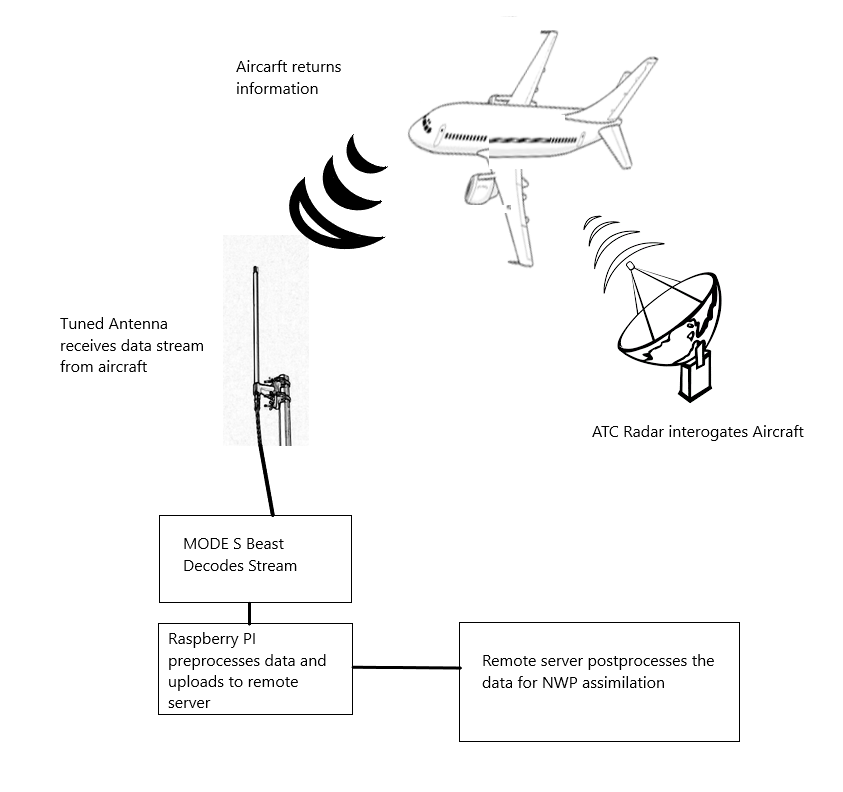
Schematic of data communication between air traffic control (ATC) Radar, the aircraft and ground.
Mode-S EHS data are a novel source of wind data from aircraft flight levels which can help us to make more accurate weather forecasts.
Under European regulations, all large aircraft must carry Mode-S EHS enhanced surveillance navigation apparatus. This equipment includes sensors which broadcast the flight level, Mach number (speed of aircraft relative to the air, known as airspeed, divided by the speed of sound), ground speed and track angle. An enhanced surveillance (EHS) radar at ground-level used in selective mode, Mode-S, can communicate with all aircraft in sight and obtain such data from it. Using this information wind speed and temperature at the altitude of the aircraft can be derived.
This year Met Éireann installed ground-based Mode-S receivers at Valentia Observatory in Caherciveen and Met Éireann’s headquarters in Glasnevin, Dublin in collaboration with the Royal Netherlands Meteorological Institute (KNMI). We hope to install more receivers in the near future.
Numerical weather prediction (NWP) mathematical models are used for guidance by weather forecasters. These models use weather observations or derived weather information to produce high-quality weather forecasts. Observations of pressure, temperature, humidity and wind are very important for initialising NWP models. These data are available from weather balloons, such as those launched twice daily at Valentia Observatory), aircraft, wind profilers, radar, and satellites. AMDAR (Aircraft Meteorological DAta Relay) and AIREP (aircraft report) data are currently used in the data assimilation component of Met Éireann’s high resolution NWP model, HARMONIE-AROME. Evaluation of the usefulness of Mode-S data in the model will commence soon.